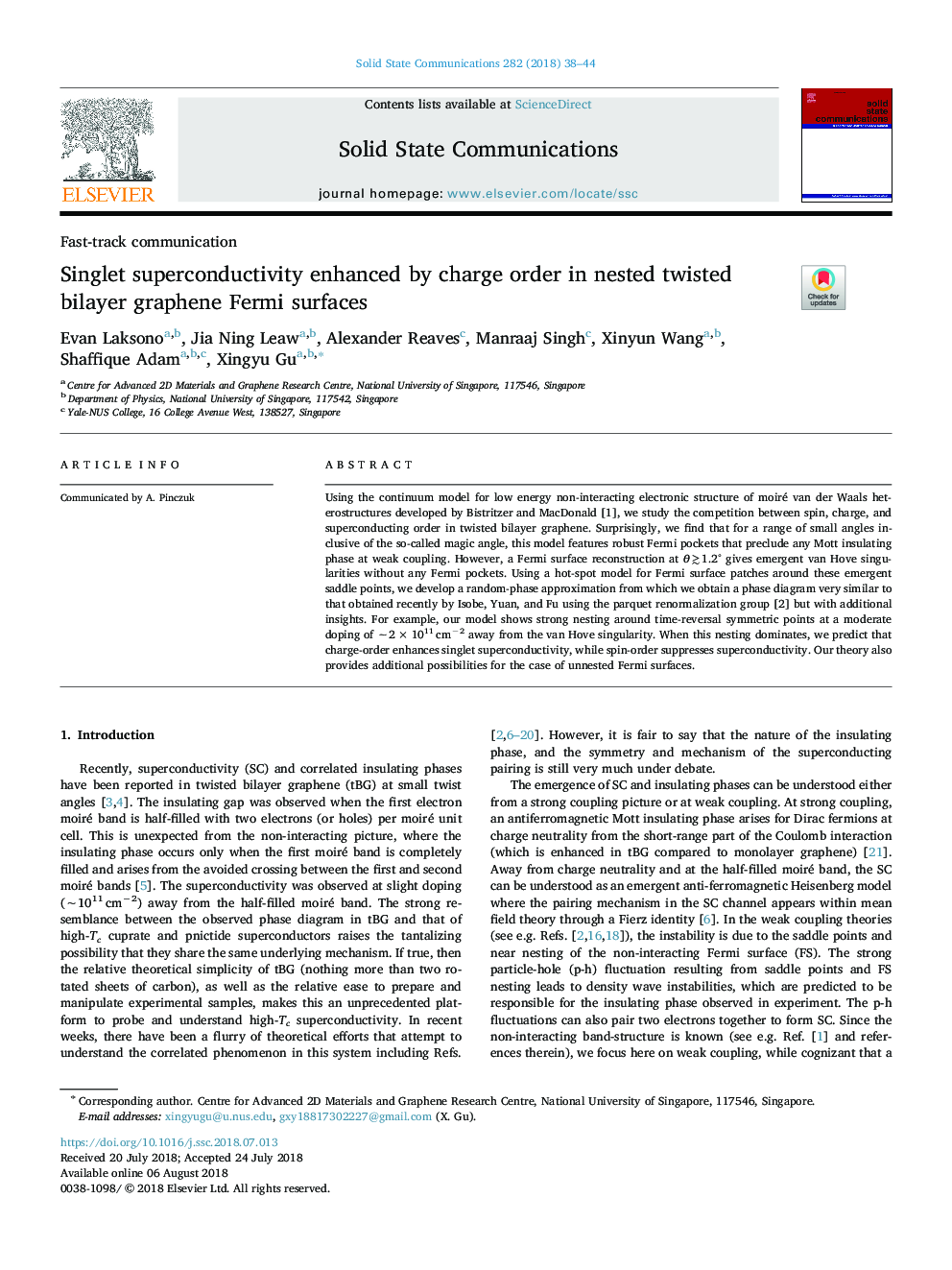| Article ID | Journal | Published Year | Pages | File Type |
|---|---|---|---|---|
| 7987731 | Solid State Communications | 2018 | 7 Pages |
Abstract
Using the continuum model for low energy non-interacting electronic structure of moiré van der Waals heterostructures developed by Bistritzer and MacDonald [1], we study the competition between spin, charge, and superconducting order in twisted bilayer graphene. Surprisingly, we find that for a range of small angles inclusive of the so-called magic angle, this model features robust Fermi pockets that preclude any Mott insulating phase at weak coupling. However, a Fermi surface reconstruction at θâ¯â³â¯1.2° gives emergent van Hove singularities without any Fermi pockets. Using a hot-spot model for Fermi surface patches around these emergent saddle points, we develop a random-phase approximation from which we obtain a phase diagram very similar to that obtained recently by Isobe, Yuan, and Fu using the parquet renormalization group [2] but with additional insights. For example, our model shows strong nesting around time-reversal symmetric points at a moderate doping of â¼2â¯Ãâ¯1011â¯cmâ2 away from the van Hove singularity. When this nesting dominates, we predict that charge-order enhances singlet superconductivity, while spin-order suppresses superconductivity. Our theory also provides additional possibilities for the case of unnested Fermi surfaces.
Related Topics
Physical Sciences and Engineering
Materials Science
Materials Science (General)
Authors
Evan Laksono, Jia Ning Leaw, Alexander Reaves, Manraaj Singh, Xinyun Wang, Shaffique Adam, Xingyu Gu,
